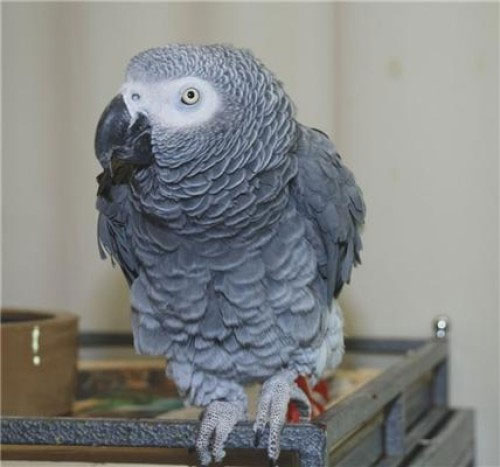Parrots know the benefits of sharing?
(A study has been conducted to determine whether gray parrots understand the meaning of exchanging or reciprocating. Research conducted to observe a gray parrot named Griffin, this bird has supported the opportunity to "share" with two companions who are two participants in this experiment.
Griffin is given a chance to choose 4 different colored cups. A green cup (representing a sharing option) means that it and its partners receive a food reward. A pink cup represents a selfish choice when only Griffin receives food, an orange cup corresponds to the choice when only its partners receive food, and a purple cup means an unpleasant option when no one gets food.
With some exceptions it has consistently prioritized green for each of its partners, which suggests it has understood the benefits of choosing a 'sharing' opportunity.
This study was conducted by Dr. Franck Péron from School of Life Sciences, Lincoln University, England, along with colleagues at Harvard University and Brandeis University of America. The study was published in Animal Cognition.
The objective question of this study is that, if Griffin can learn human activities, understand that people are repeating their own actions by reciprocating action, and that by choosing Choose the blue cup (shared cup), it can maximize the amount of food received, because then it and the same participant can get a food reward in each turn.

Griffin gray parrot
This study follows a previous study conducted by the same team of scientists, studying gray parrots and using a similar evaluation system, reflecting a limited understanding of there is reciprocity in these parrots.
When paired comparisons of humans and parrots, humans and parrots play a special role, such as being selfish, giving or repeating bird behavior, the bird's reactions have tended to be consistent with human behavior.
Scientists have hypothesized that birds cannot fully understand the imitation situation, they can maximize potential rewards by choosing to share - as a result of publicity. Their observations of the behavior of copying are erratic, reasonable, compared to the selfish or human selfishness and therefore do not realize that they are being reflected.
Dr Péron said: "This next experiment has shown that at least one gray parrot - the dominant one in this case - responded in a way that showed that it deduced appropriate situations."
"With a few exceptions, Griffin chose a blue sharing cup. It seems to understand the parameters of the study, that each person has been reflecting on Griffin's own behavior and not acting erratically. Wear. Although the pink (selfish) choice may be the same reward as the green option (share), Griffin did not act that way. It seems that it has envisioned quickly that if it picks pink, which means it can miss a reward when it's the turn of the people to make choices'.
An explanation of Griffin's behavior may be based on two research articles on primates that many forms of reciprocal behavior in primates can be interpreted as a balancing act. fairness and empathy, or fairness and social welfare.
The basic idea in both research articles is that the choice of group members in return is derived from the mutual influence of selfishness, some degree of concern for others' happiness. and a few meanings of fairness.
New data show that a degree of reciprocity can be demonstrated at least in a bird species, despite the basic mechanism. The basis for such an act may be the result of evolutionary pressures used to develop successful cognitive and communication abilities in both birds and primates.
The research team said that imitation tests should be done as a separate experiment, not contrary to the tests in which people act consistently, to determine if the results could different or not.
- Decipher the secret that makes parrots talk
- Surprised by the ability of the parrot to make food
- Smart parrots like people
- Discover new parrot species in Mexico, green head 'crown'
- Shocking news: Brazil's
- Parrots help people paralyze back
- Parrots are extremely intelligent species but why are they capable of that?
- The parrot knows how to sing
- Parrots are able to use tongues to speak
- Share online
- Parrots also know the language
- Gray parrots also like opposing partners
 Animal 'suffering' after hibernation
Animal 'suffering' after hibernation Why do goats climb well?
Why do goats climb well? Scientists were surprised to see chimpanzees eating turtles
Scientists were surprised to see chimpanzees eating turtles Giant catfish died deadly due to drought in Thailand
Giant catfish died deadly due to drought in Thailand